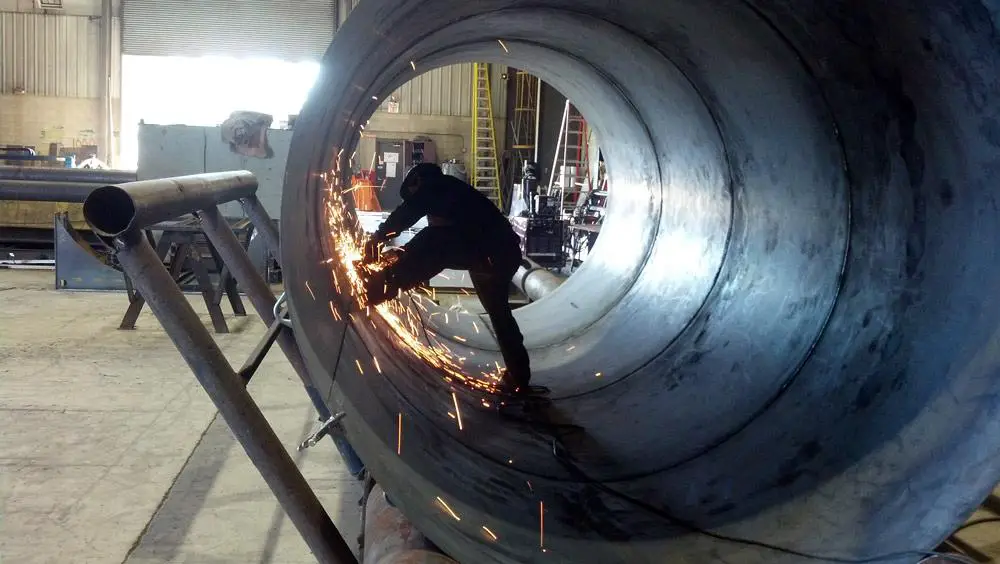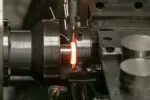When it comes to solving problems involving the storage and movement of gas or liquid under high pressure, pressure vessels are the answer. Many industries utilise pressure vessels to store and transmit gas or liquid under high pressure.
Because of the essential nature of pressure vessel applications, welds are subjected to stringent quality controls, which may include X-ray inspection and certification.
They are widely used for high-pressure or low-pressure confinement and come in a variety of forms, sizes, shapes, and requirements. Given the essential nature of the applications, these tanks are built in a series of processes with meticulous attention to detail.
There are Various Wedding Techniques you can Employ for Pressure Vessel Welding.
1.) Shielded Metal Arc Welding, also known as Stick Welding
2.) Plasma Arc Welding
3.) Flux-Cored Arc Welding
4.) Submerged Arc Welding
5.) Gas Tungsten Arc Welding
6.) Gas Metal Arc Welding
Let us look at each method in detail-
1.) Shielded Metal Arc Welding (Stick welding)
It is the most widely used welding method. It is adaptable and requires the least amount of equipment. The tiny light electrode and holder can be utilised in small spaces or hundreds of feet distant from the welding power supply.
Stick welding may provide high-quality results, but it requires expert welders. Because the heat input is normally minimal, the weld metal has a fine microstructure.
This results in extremely good mechanical qualities, nevertheless, the slag that shelters the molten weld metal from the environment can cause slag inclusions if not cleaned adequately between passes and at the end and beginning of each weld.
Large welds have multiple pauses and starts, which is frequently where faults are discovered.
2.) Plasma Arc Welding (PAW)
Plasma arc welding is a common welding procedure in pressure vessel construction in which plasma is heated to extremely high temperatures and ionised before being used to transmit an electric arc to a work piece.
The plasma welding technique ensures the highest quality standards in pressure vessel production, allowing for strong and precise welds on both thick and thin metal.
In comparison to previous welding methods, the technology delivers enhanced levels of control and precision to make high quality welds at exceptionally fast speeds.
3.) Flux-Cored Arc Welding
It is the most versatile arc welding technique. It is classified into two types: self-shielded and gas-shielded. Self-shielded is often utilised outdoors and when great mechanical qualities are not required.
In general, gas-shielded is employed in indoor production shops where higher-quality welds are required.
4.) Submerged Arc Welding (SAW)
It is distinguished by the employment of a continuously-fed solid wire electrode to create an arc completely coated by a layer of granular flux.
The most significant advantage of SAW is its higher deposition efficiency. It can often deposit weld metal more effectively than any other method.
5.) Gas Tungsten Arc Welding (TIG)
This is an all-position welding method that uses a non-consumable tungsten electrode to form the weld. It produces the finest quality weld and has thus become a popular option for gas and manual metal arc welding in pressure vessel manufacturing.
TIG welding is commonly employed on stainless steel and nonferrous metals such as aluminum, magnesium, and copper alloys when accurate, tiny welds are required.
Because manual gas tungsten arc welding uses low amps and voltages and adds cool filler metal to the puddle, the heat input per deposited weld metal is modest.
This results in smaller grain size and significantly superior mechanical characteristics than conventional methods.
6.) Gas Metal Arc Welding (MIG)
Another prevalent method is gas metal arc welding (GMAW) or MIG welding. Gas Metal Arc Welding is distinguished by the use of a solid wire electrode that is supplied continuously through a welding cannon.
To heat and melt the base and filler materials, an arc is formed between this wire and the workpiece. When the wire is molten, it is deposited in the weld junction. Usually, there is a combination of MIG and TIG with a Sub Arc Welding technique to fabricate pressure vessels.
Things to Remember While Welding Pressure Vessels
Welding pressure vessels is not only risky for the welder, but also for the tank’s future owner and operator. A steel shell holds pressurised gases or chemicals that desire to escape and expand, keeping the content secure.
And that is why it is important to note down a few things before we associate ourselves with welding pressure vessels.
1.) When it comes to pressure vessel manufacturing, quality must be strictly adhered to at all stages of production. Welding, being one of the key operations, is no exception.
2.) When the vessel is placed into service, any fault in the welding will have devastating effects. Not just welding, but all of the other vessel building operations stated previously, must be carried out with extreme accuracy.
3.) The ASME pressure vessel code provides materials, assembly, and safety requirements to assure that the pressure vessel manufacturing process fulfils industry demands and functions effectively, with no risk of harm or danger to those working around them.
4.) Several feet of welds are frequently necessary for producing pressure containers. It takes a lot of planning to ensure that the pressure vessel welding standards are solid.
Inspection And Testing
Pressure vessel operations can be quite hazardous. As a result, pressure vessels must undergo stringent quality control inspections in accordance with the ASME Pressure Vessel Welding Inspection regulations. Pressure vessel welding testing may involve X-ray examinations and relevant certificates.
Pressure vessels are rigorously tested and inspected to ensure that they meet ASME (American Society of Mechanical Engineering), ANSI (American National Requirements Institute), and ASTM (American Society for Testing and Materials) standards.
A vessel must undergo welding examinations such as X-ray, ultrasonic, optical testing, magnetic particle testing, and dye penetrant. Passing a hydro test is another typical criterion for pressure vessels.
The testing procedures utilised are determined by the sort of task the vessel will be performing, but these practices are vital to safety and quality.
Subsurface fractures and inclusions can be found by X-ray examination. This is a costly technique, however it is usually done to assure safety in key weld joints.
Every one of these testing procedures has benefits and drawbacks that must be balanced based on the work type and appropriate standard.
Manufacturing of Pressure Vessels
Following this basic checklist is a solid start toward positive pressure vessel welding procedure experiences and adequate end product quality.
1.) Choose the appropriate raw materials for the work, whether they be plates, wires, welding rods, forgings, or pipes.
2.) Assemble the pressure vessel project’s components.
3.) Carefully prepare the surfaces to be welded.
4.) Cut the raw materials according to the specifications of your task.
5.) Any parts that require it should be machined.
6.) Take extra precautions to avoid after-rust and cross-contamination, especially if you’re cleaning your components with a grinder or steel brush.
7.) Weld the pressure vessel assembly pieces together and examine all welds.
To conclude, each arc welding procedure has advantages and disadvantages. It may generate high-quality welds, yet, if not used appropriately, each can produce poor welds.
In general, gas shielding methods produce more pure weld metal and have superior mechanical qualities with less defects. Fluxed methods are simpler to utilise, however they can result in micro-inclusions, greater oxygen levels, and worse mechanical characteristics.
As a result, depending on the application, intended cost, and necessary quality level, any of the above techniques may result in a good quality and successful weld if employed correctly.







